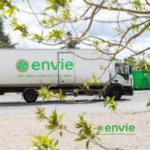
Measuring your social and environmental impact: 5 key steps
1: Understanding the Importance of Measuring Social and Environmental Impact
Social impact represents the changes caused to stakeholders, society and the environment resulting from specific actions taken by an organization.These transformations manifest themselves in two ways:– Negative effects: pollution, waste, CO2 emissions, unemployment, depression, among others. – Positive effects: energy savings, achieving carbon neutrality, professional reintegration, improved daily well-being, and more. Social impact can take many forms, reflecting the varied effects that an organization or activity can have on society and the environment.Here are some examples:
- Local Economic Development: Initiatives that support local small businesses, create jobs, and promote economic self-sufficiency in communities.
- Environmental conservation: Actions to protect natural resources, such as reforestation, protection of natural habitats, or advanced recycling programs.
- Social inclusion: Programs designed to integrate marginalized groups, such as people with disabilities, ethnic minorities, or disadvantaged populations, into various aspects of society.
For ESS companies, measuring this impact is crucial for several reasons. First, it allows them to validate and improve their approach and practices. Second, by quantifying their positive contribution, they can strengthen their legitimacy and attractiveness to investors and consumers, who increasingly favor responsible brands.
2: Effective methodologies for measuring social and environmental impact
Measuring social and environmental impact and comparing performance helps companies make important decisions about their future, set clear goals and share their results. Several methods can help measure social and environmental impactSocial Return on Investment (SROI) is a method that quantifies social benefits in monetary terms, allowing companies to understand the economic return of each euro invested in social actions. When it comes to indicators, it is essential to choose those that faithfully reflect the company's effects on its environment and society, such as reduced CO2 emissions or the number of jobs created in disadvantaged communities, etc.
List of tools to measure its impact:
Sopact
Features: Automates data collection and analysis for impact reporting.
Impact Cloud
Features: Allows the definition of specific indicators and generates detailed impact reports.
Social Value International (SROI)
Features: Provides resources for calculating the social return on investment of projects or policies.
SIMA
Features: Provides a standardized method for defining and collecting impact data.
B Analytics
Features: Allows assessment of impact performance according to B Corp certification criteria.
The method you choose to evaluate impact depends on what you are trying to accomplish with your evaluation. Here are some examples of methods you can use, depending on your goal:
3: Certifications and Standards to measure its social and environmental impact
For EHS companies, obtaining certifications such as B Corp or adhering to standards such as ISO 26000 can be a major asset. These labels and standards assure stakeholders that the company meets rigorous social and environmental performance criteria. In addition, they provide a structured framework for continually improving business practices while strengthening consumer and investor confidence.
Examples of certification and standard:
B Corp
Certification awarded by B Lab to companies that meet high standards of social and environmental performance, transparency and accountability.
ISO 26000
An international standard that guides organizations on the principles and practices of social responsibility, helping businesses operate in a socially responsible manner.
LEED (Leadership in Energy and Environmental Design)
A certification that assesses the design, construction, operation and maintenance of green buildings, ensuring sustainable practices in real estate.
Fair Trade Certification
This certification guarantees that products are obtained in compliance with fair trade standards, ensuring fair pay and good working conditions for farmers and workers.
SA8000
An international standard that encourages organizations to develop, maintain and enforce socially acceptable work practices in workplaces.
4: Communicate your impact effectively
Communicating impact is not limited to producing annual reports. It should be integrated into all corporate communications strategies, from social media storytelling to participating in industry events. Using real-life case studies and testimonials can help illustrate impact in a more vivid and tangible way. It is also crucial to speak to different audiences in terms that resonate specifically with them, whether they are investors interested in ROI or consumers concerned about ethical business practices.
Example of an ESS company that communicates very well:
The Hive that says Yes!
Sector: Local and sustainable food
Impact: Promotes local agriculture and reduces the carbon footprint of food transportation. It communicates effectively through case studies, impact reports, and testimonials from producers and consumers.
Lemon Tri
Sector: Recycling
Impact: Offers innovative solutions for sorting and recycling waste in public places and businesses. Lemon Tri regularly shares data on the quantities of waste recycled and the impact of these actions on the environment through its communication channels.
Shared Energy
Sector: Renewable energy
Impact: Finances and develops renewable energy projects managed by and for citizens. It uses graphs, interactive maps, and key figures to illustrate the impact of its investments in terms of green energy production and citizen participation.
CSR communication represents the responsible commitments made by the company.
The advantages are multiple:For the employer brand: employees who identify with and are satisfied with the company's values become engaged and successful employees. For brand image: in the context of current societal challenges, a growing number of consumers prefer to choose brands that reflect their own ethical commitments.
Get help communicating your impact
5: Impact of Measurement and Communication on the Global Strategy of the Company
Finally, effectively measuring and communicating the social and environmental impact of an SSE company or nonprofit can profoundly transform its overall strategy. This can positively influence customer loyalty and attract new investment, while strengthening the company's market position. More fundamentally, it allows the company to truly align with its core values, ensuring consistency that is often rewarded with sustainable growth and increased employee engagement.
Conclusion
For social and solidarity economy (SSE) businesses, fully embracing the principles of sustainability and social impact is not only a matter of ethical responsibility, but also a crucial strategic lever. As the GreenFlex-ADEME barometer data clearly indicates, a majority of consumers are now moving towards responsible consumption practices, highlighting the importance for SSEs to effectively measure and communicate their impact. Adopting robust methodologies for assessing this impact, pursuing recognized certifications, and transparent and engaging communication are not only assets to improve their attractiveness and credibility. These steps are also essential to solidify their market positioning and to stimulate sustainable growth that aligns their activities with their core values. In this way, SSEs can not only thrive but also propel significant positive change within society, demonstrating that profitability can go hand in hand with social and environmental progress.
To ensure your organization's core missions reach a wider, more engaged audience, we offer specialized SEA expertise!



